A recent update on new synthetic chiral compounds with antileishmanial activity
- PMID: 35947400
- PMCID: PMC9543214
- DOI: 10.1002/chir.23494
A recent update on new synthetic chiral compounds with antileishmanial activity
Abstract
Parasitic diseases, including malaria, leishmaniasis, and trypanosomiasis, affect billions of people and are responsible for almost 500,000 deaths/year. In particular, leishmaniasis, a neglected tropical disease, is considered a global public health problem because current drugs have several drawbacks including to toxicity, high cost, and drug resistance, which result in a lack of effective and readily available therapies. Therefore, the synthesis of new, safe, and effective molecules still requires the attention of the scientific community. Moreover, it is well known that chirality plays a crucial role in the antiparasitic activity of molecules, driving the design of their synthesis. Therefore, in this review we report a recent update on new chiral compounds with promising antileishmanial activity, focusing on synthetic approaches. Where reported, in most cases the enantiopure compound has shown better potency against the protozoa than its enantiomer or corresponding racemic mixture.
Keywords: chiral catalysis; chiral pool; chiral resolution; imidazoxazines; imidazoxazoles; kinetic resolution; leishmania; medicinal chemistry; natural products; peptides.
© 2022 The Authors. Chirality published by Wiley Periodicals LLC.
Figures
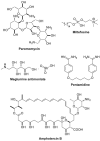



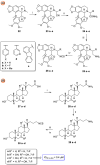
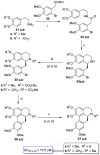

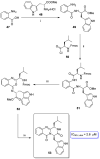





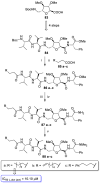





Similar articles
-
Natural products as trypanocidal, antileishmanial and antimalarial drugs.Curr Top Med Chem. 2002 Nov;2(11):1215-37. doi: 10.2174/1568026023393011. Curr Top Med Chem. 2002. PMID: 12171582 Review.
-
Potentials of marine natural products against malaria, leishmaniasis, and trypanosomiasis parasites: a review of recent articles.Infect Dis Poverty. 2021 Jan 22;10(1):9. doi: 10.1186/s40249-021-00796-6. Infect Dis Poverty. 2021. PMID: 33482912 Free PMC article. Review.
-
Recent Progress in the Development of Indole-Based Compounds Active against Malaria, Trypanosomiasis and Leishmaniasis.Molecules. 2022 Jan 5;27(1):319. doi: 10.3390/molecules27010319. Molecules. 2022. PMID: 35011552 Free PMC article. Review.
-
The role of natural anti-parasitic guided development of synthetic drugs for leishmaniasis.Eur J Med Chem. 2023 Oct 5;258:115609. doi: 10.1016/j.ejmech.2023.115609. Epub 2023 Jun 30. Eur J Med Chem. 2023. PMID: 37421889 Review.
-
State-of-the-art Review on the Antiparasitic Activity of Benzimidazolebased Derivatives: Facing Malaria, Leishmaniasis, and Trypanosomiasis.Curr Med Chem. 2024;31(15):1955-1982. doi: 10.2174/0929867331666230915093928. Curr Med Chem. 2024. PMID: 37718524 Free PMC article. Review.
Cited by
-
Easy one-pot synthesis of multifunctionalized indole-pyrrole hybrids as a new class of antileishmanial agents.RSC Adv. 2024 May 14;14(22):15713-15720. doi: 10.1039/d4ra02790f. eCollection 2024 May 10. RSC Adv. 2024. PMID: 38746834 Free PMC article.
-
Efficient and Rapid Arylation of NH₂-Unprotected Bromobisindole Ethanamines via Suzuki-Miyaura Coupling: Generating New Leads Against Leishmania.Chemistry. 2025 Aug 1;31(43):e202500637. doi: 10.1002/chem.202500637. Epub 2025 May 19. Chemistry. 2025. PMID: 40344587 Free PMC article.
-
Investigation of antileishmanial, antioxidant activities, CT-DNA interaction and DFT study of novel cobalt(II) complexes derived from mesogenic aromatic amino acids based Schiff base ligands.Biometals. 2024 Dec;37(6):1575-1597. doi: 10.1007/s10534-024-00627-9. Epub 2024 Aug 18. Biometals. 2024. PMID: 39154301
-
Exploring hydrophilic 2,2-di(indol-3-yl)ethanamine derivatives against Leishmania infantum.PLoS One. 2024 Jun 13;19(6):e0301901. doi: 10.1371/journal.pone.0301901. eCollection 2024. PLoS One. 2024. PMID: 38870204 Free PMC article.
References
-
- World Health Organization Website about Leishmaniasis: www.who.int/news-room/fact-sheets/detail/leishmaniasis (accessed on 9 May 2022).
Publication types
MeSH terms
Substances
LinkOut - more resources
Full Text Sources
Medical

